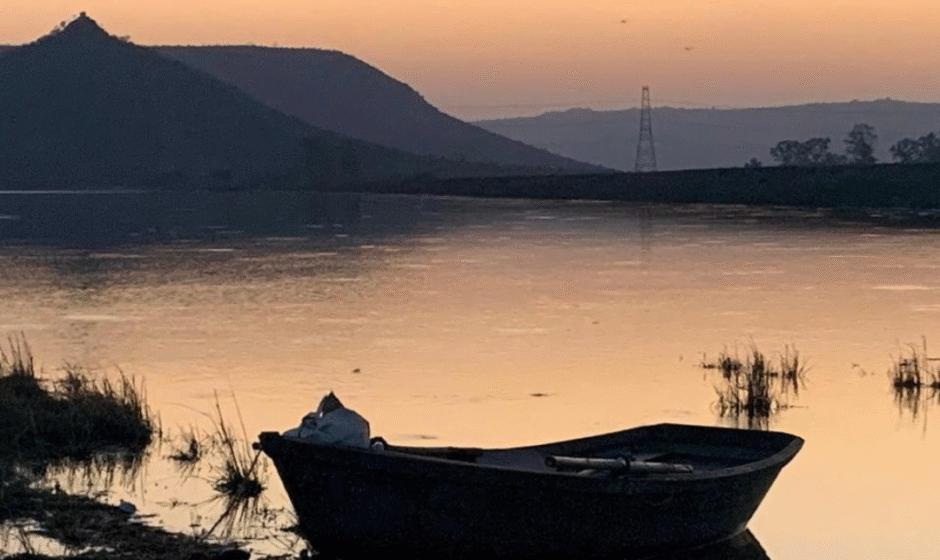By Shailesh Patel, Co. founder, Dam Good Fish
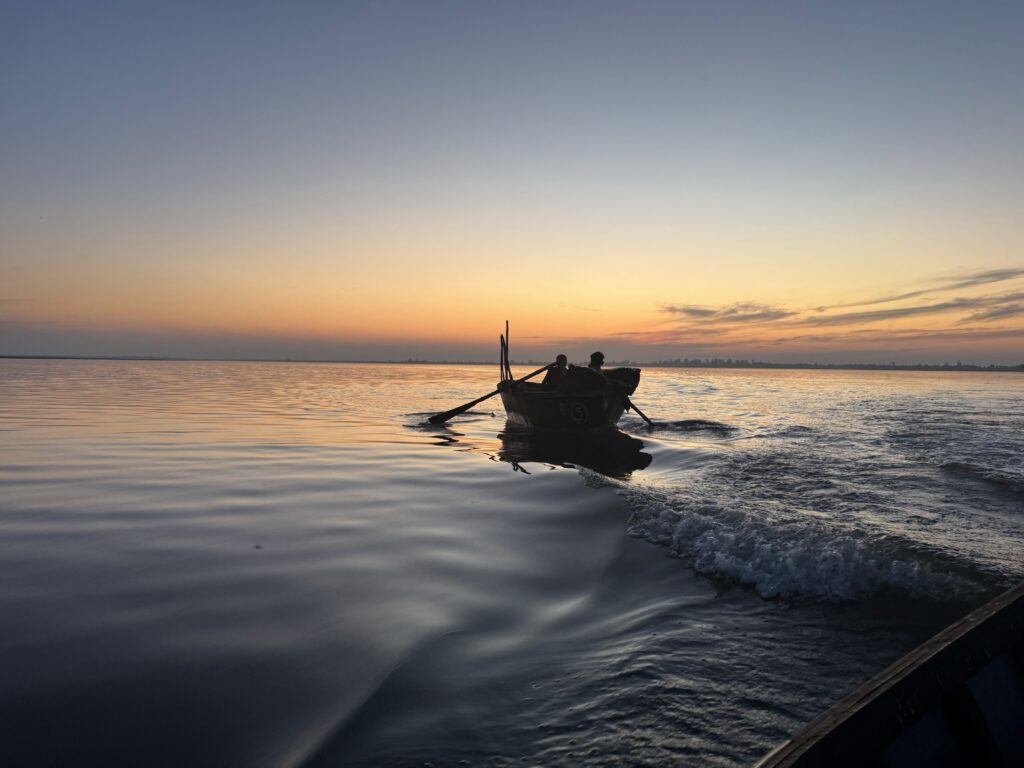
There is growing global interest in sustainable seafood, especially in aquaculture of fish that is grown in reservoir or dam systems, due to increasing concerns about overfishing. The Food and Agriculture Organization (FAO) indicates that 34.2% of global fish stocks are over-exploited, and another 60% are fully exploited and have little room for growth. Without sustainable practices, marine biodiversity and food security long-term will be threatened.
The emergence of sustainable aquaculture presents ecological, nutritional, and economic advantages. It is transforming the relationship between coastal and inland communities and seafood, by generating livelihoods for local people, easing the pressure on ecosystems, and providing a healthy source of protein.
India has great potential in this area. By not developing its over 3.5 million hectares of reservoirs and dams, the country’s largest and least developed inland fisheries resource, India has the opportunity to sustainably develop dam-based aquaculture. As India’s fish production ranks the third largest in global production, responsible for approximately 8% of total world fish production, building the aquaculture sector on this resource has the potential to improve India’s capacity to be ecologically resilient, and improve access to nutrition, while helping to achieve the economic and social development goals in parallel.
The Rise of Sustainable Seafood
This sector of sustainable seafood is rapidly changing, with new evidence demonstrating its considerable economic and ecological footprint, especially in India. More than one-third of world fish stocks are now overfished, thereby creating an urgent and immediate need for sustainable aquaculture measures that protect aquatic biodiversity and food security.
Increasing Yields through Scientific Management
The scientific stocking of reservoirs in India has been reported to increase fish yields significantly; 150–200 kg/ha/year as opposed to traditional stocking of 20–30 kg/ha/year, findings provided by ICAR-CIFRI. The scaling of this method has allowed aquaculture to provide increased sustainable intensification capabilities while maintaining ecological and environmental integrity.
Economic Contributions and Livelihoods
India’s fisheries sector, which contributes 1.24% to national GDP and nearly 7% to agricultural GDP, sustains the livelihoods of over 28 million people. One of the greatest impacts of dam aquaculture is in rural communities. For example, 120 fishermen at Jayakwadi Dam in Maharashtra implemented scientific stocking, which resulted in a 40% increase in harvest in three years. Household incomes rose from ₹7,500 to ₹12,000, and families used their increased earning capacity to invest more in education and health care.
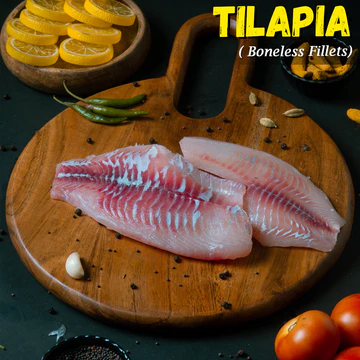

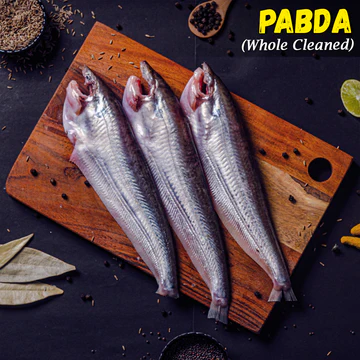

Increasing Women’s Empowerment
Sustainable dam aquaculture is also leading to increases in women’s empowerment. For instance, Ukai Dam in Gujarat has women’s groups processing and packaging value-enhanced products, such as marinated fillets, generating annual revenues of ₹18-20 lakh. Women comprise just under 25% of India’s fisheries workforce (mostly in post-harvest roles), but this most recent sustainable initiative increased women’s earnings by 50-70% creating more opportunities for women’s economic empowerment.
Health Benefits of Naturally-Raised Fish
Consumers are becoming increasingly conscious of the nutritional value of their food. Naturally-raised fish from dams offer several health benefits compared to fish from industrial farms.
These fish often eat a natural diet which means they usually have larger amounts of omega-3 fatty acids, necessary vitamins and minerals. Omega-3 fatty acids contribute to heart health by burning up inflammation, lowering blood pressure, and improving heart function. Naturally-raised fish are also less likely to have traces of the dangerous antibiotics, pesticides and other chemical waste often found in seafood from intensive farming processes.
Health-conscious consumers who are also considering ecological health are likely to use sustainably-sourced fish, and as the demand for clean, traceable food sources grows, so as choice of naturally-raised fish from dams will be a good choice as well. Naturally-raised fish delivers both nutrition and sustainability.
Omega-3 Fatty Acid Content: Research conducted by the Central Institute of Freshwater Aquaculture (CIFA) indicates that rohu and catla reared in freshwater dams have 15–20% more omega-3 fatty acids than fish raised in intensive aquaculture experience.
Less Contaminated: Because fish raised in freshwater dams are less likely to contain antibiotic residues or pesticides, contaminant risks are minimized compared to fish raised by more chemical-intensive aquaculture.
Environmental Sustainability and Biodiversity Conservation
Cultivating fish populations in freshwater reservoirs reduces the stress fisheries put on wild fish populations, as well as contributes marine biodiversity and scientific integrity. With regards to sustainability, practices that promote conservation of water quality while improving habitat restoration include organic feed, using minimal chemicals, and planting native species. Many of the activities being reviewed could involve some type of reforestation or watershed improvement, while also support for the goals of the National Fisheries Policy of 2020 and the livelihoods of local community members.
Challenges and Future Prospects
Even if dam aquaculture systems offer measurable social, economic, nutritional and sustainability benefits to all of humanity, remain some constraints to this opportunity including water quality, disease management and regulatory system challenges. Some innovations, which are currently being trialed, aim to address some of these challenge; these innovations include AI feed optimization, IoT based water quality sensors, and blockchain traceability schemes.
Food exports for India’s average seafood consumption are likely to grow at a CAGR of 7% to 2030 (OECD-FAO), and with sustainable management of reservoir fisheries, India is well positioned to capitalize, sustainably. More certification methodologies would also be useful in building trust among consumers. If we can continue to invest in, and work together, as community-led reservoir aquaculture will always have a significant share of India’s USD 14 billion fisheries economy, while contributing sustainable livelihoods, healthier diets, and balancing ecological sustainability.
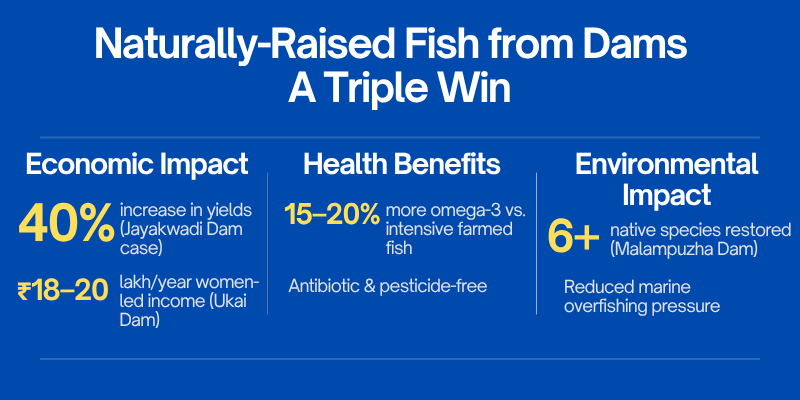
Conclusion
The sustainable seafood revolution, encompassing the naturally-raised fish acquired from dams, presents an interesting case study in how to achieve a healthy balance of economic, environmental and health factors, is important. Such a solution: sustainable fish farming positions new economic capacity for local communities, enhances healthy diets, and contributes to conserving aquatic ecosystems. This began to gain traction as global awareness and demand for sustainable mechanisms for food production was developing. Dam fish farming offers such an approach, valuable, replicable and scalable, at the perfect time. In developing this argument, I invite consumers, businesses and policymakers to understand, engage and support the dam fish farming movement to engage in action to move collaboratively towards a more sustainable and resilient future for food production and beyond.
About the Author

Shailesh Patel, Co.-Founder of Dam Good Fish
https://www.linkedin.com/in/shailesh-patel-abba7930/?originalSubdomain=in
Shailesh Patel, exemplifies a new breed of Indian entrepreneurs dedicated to revolutionizing traditional industries and demonstrating their potential through innovation and purposeful leadership.
Shailesh Patel, one of the founders of Dam Good Fish, is shaking up the Indian freshwater fish sector by selling seafood directly to customers. Holding a Master’s in Business Management, his expertise spans over 15 years in strategic marketing and brand leadership endeavors. His entry into the corporate world took place at Everest Brand Solutions, progressing through Ogilvy and Scarecrow Communications into leadership roles, and finally becoming National Head-Brand Strategy for MullenLowe Lintas Group. This long journey through top-level advertising agencies has afforded him the beginnings of real insight into consumer behavior, storytelling, and how to operationalize them. In 2023, armed with this knowledge and an experience at a local fish market, Shailesh started Dam Good Fish along with two partners in Gurugram, with the hope of offering truly fresh fish that had never come in contact with chemicals, all sourced directly from dams and reservoirs-winching traditional middlemen out of the deal and patching inefficiencies in the supply chain. He leads the brand with an eye toward sustainability, transparency, and restoring trust in a food ecosystem often ignored in India.


